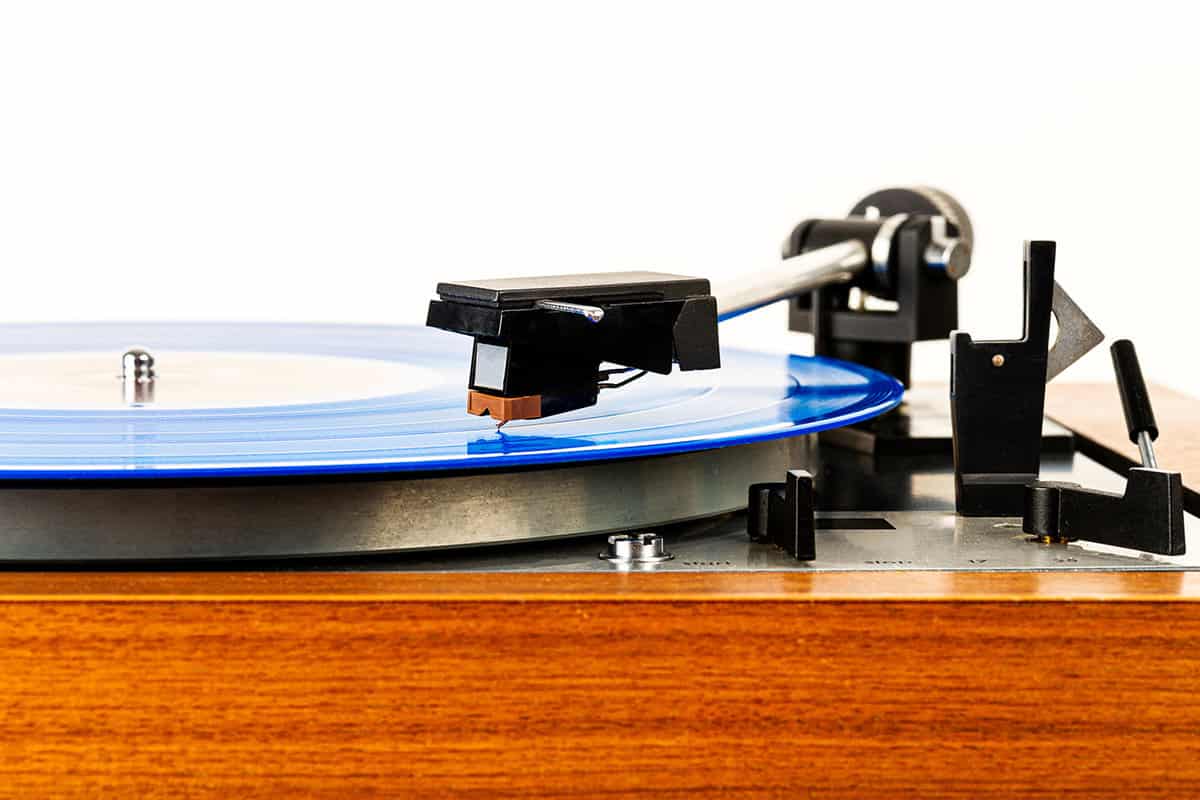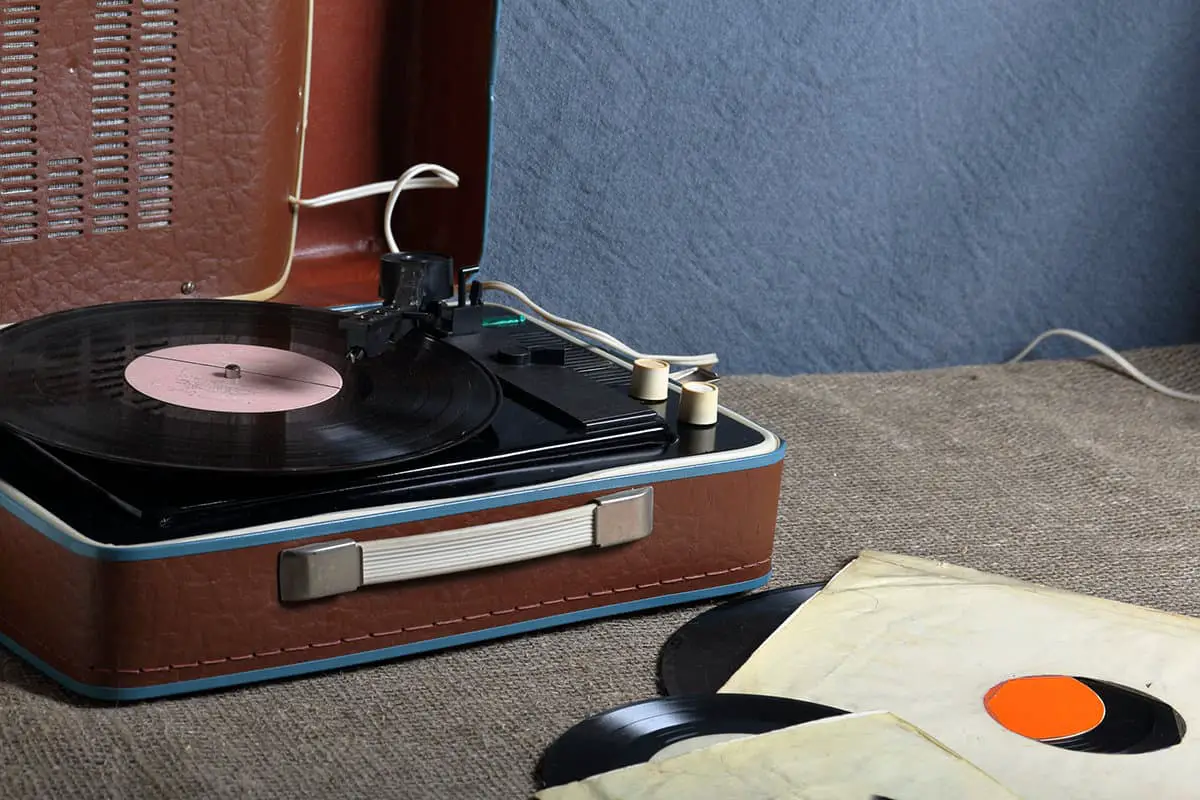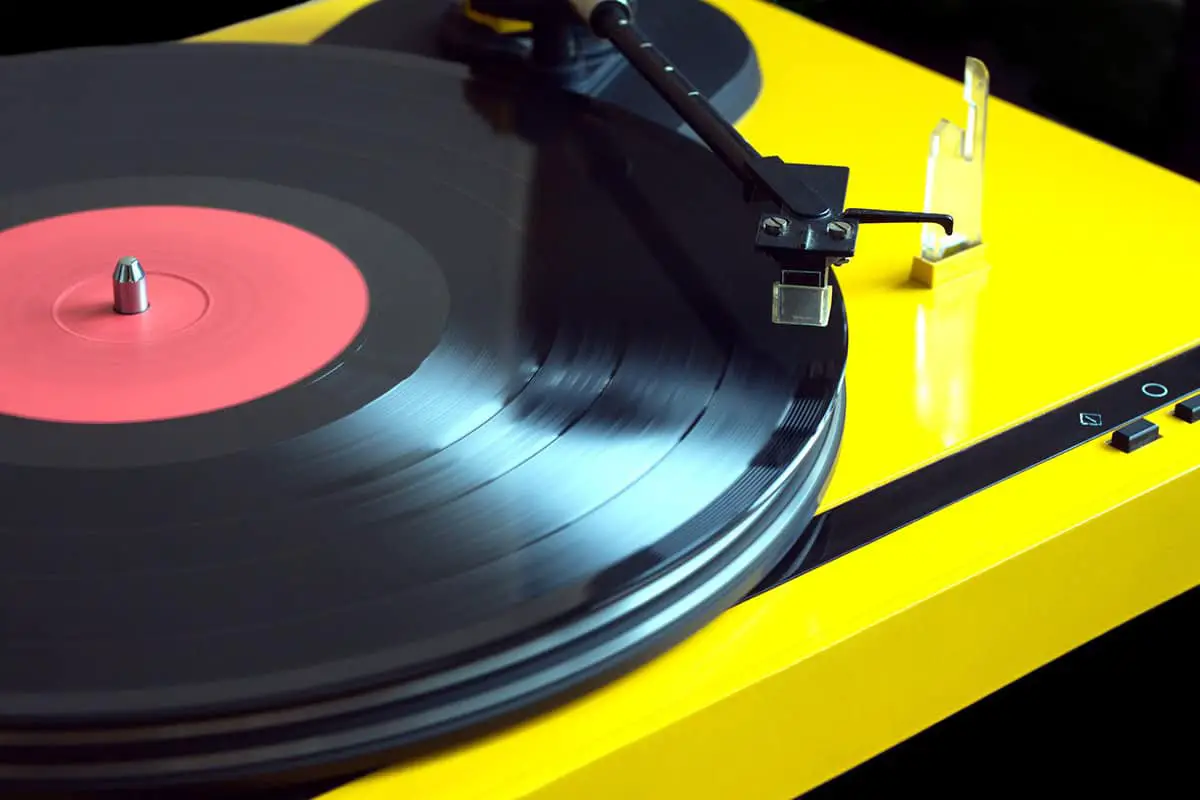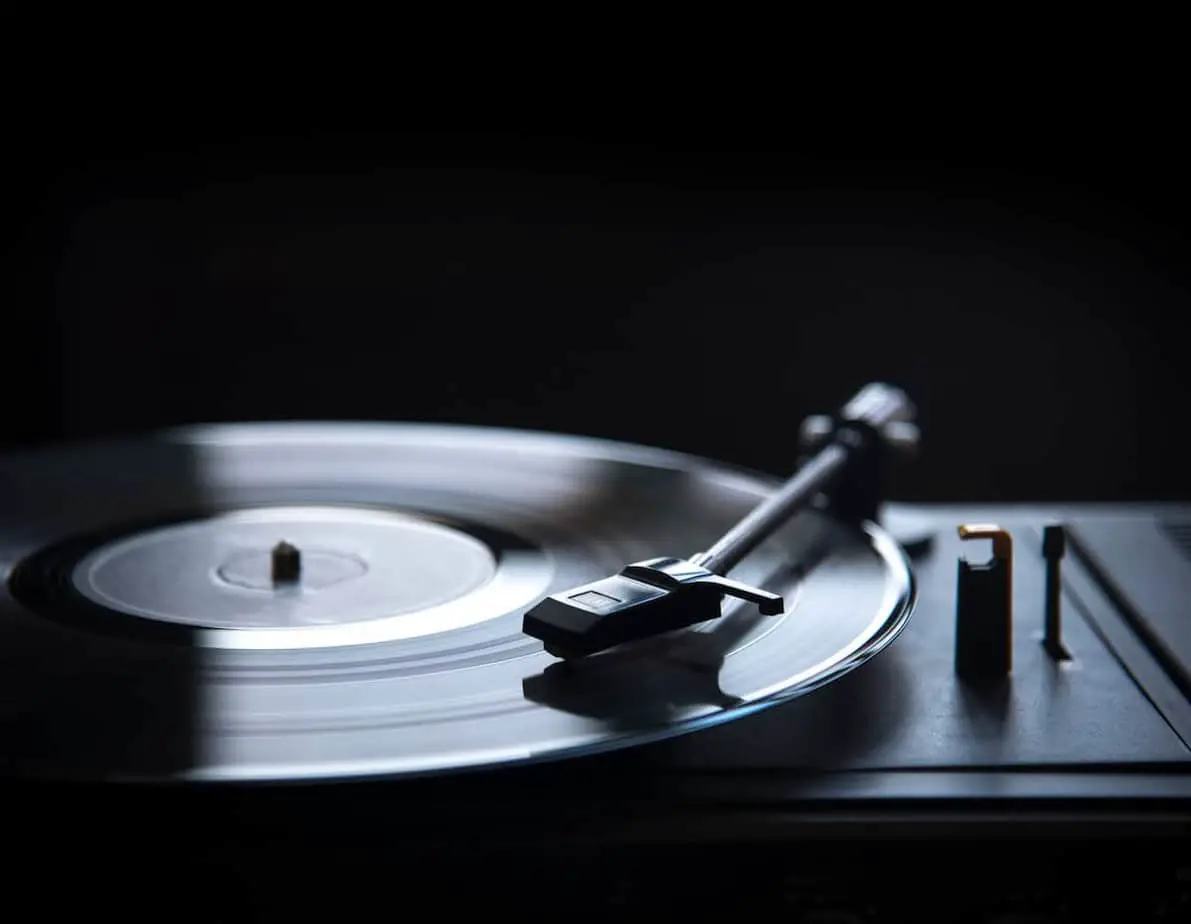This post contains affiliate links.
Over the last few years, record players have made a robust comeback in the music industry, appealing even to younger generations who grew up on mp3 players. Suffice it to say, we could all use a refresher on keeping our players working well. For instance, how do you know when it’s time to replace your record player needle?
Replace your record player needle about once every 3 years or per 200 to 1,000 hours of playtime. It’s vital to regularly inspect your needle, as this time frame depends on the model. Replace the needle when it’s jagged, skips over grooves, reduces sound quality, or if you bought a used player.
In this article, I’ll explain when to replace your record player needle and why it’s crucial to do so. I’ll also cover how to clean a needle to prolong its lifespan, the signs a needle requires changing, and how to replace it.
Table of Contents
Reasons To Replace Your Record Player Needle
Record player needles maintain intimate contact with the records themselves each time you play music. Their job is to delicately navigate the vinyl grooves containing data that the rest of the machine can convert into playable compositions. Although companies typically manufacture needles from solid materials like sapphire and diamond, they’re still vulnerable to wearing down due to the nature of their jobs.
Damaged or worn needles can:
- Widen grooves and interfere with record data
- Attract debris to the record by creating microscopic chips
- Fully slide out of the groove and scratch the entire record
- Render the record unplayable
- Make the music sound atrocious
- Plunge the resale value of records
Damage to records can be especially crushing when it’s a rare release or collectible that’s hard to find. We want all our records to sound as good as they can for as long as possible, and that requires regularly replacing needles to avoid inadvertent damage to the vinyl.
It’s tempting to save time, money, and energy by leaving the needle in place when it comes to a part so small. But don’t be fooled—though the record player needle is far from the most prominent feature of the machine, it’s one of the most crucial to maintaining and enjoying your records for years to come—or selling them later for a bit of money.
Other Record Player Issues That Cause Damage to Needles
Record player needles frequently get blamed for audio and other record player problems. However, trouble doesn’t always stem from the needle alone. Issues can originate higher up in the process at the cartridge or tonearm.
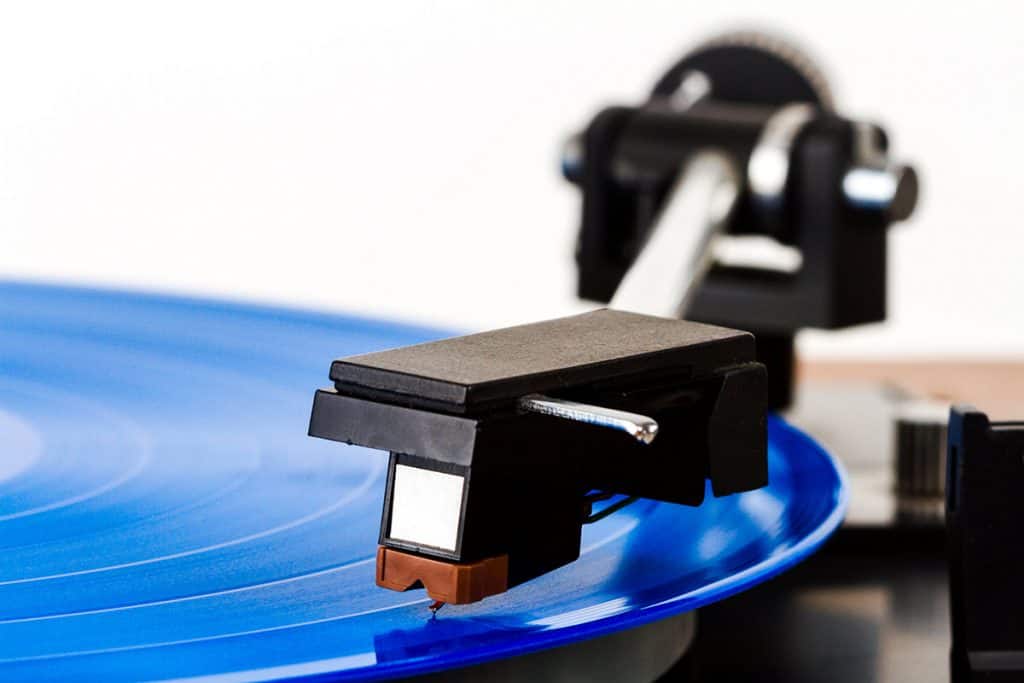
Sometimes, the cartridge itself is crooked or otherwise not appropriately aligned with the tonearm, which affects the needle placement beneath it. A metal strip within the tonearm itself can also stop absorbing shocks and place undue pressure on the needle and, consequently, the record.
It’s not always safe to simply adjust the arm assembly, so be prepared to replace the entire thing if you find this is the issue.
6 Signs It’s Time To Replace Your Record Player Needle
For the most part, time determines when you need to replace your needle. Between 200 and 1,000 hours is the most quoted range, depending on the quality of the record player. Even with perfect use, however, record player needles can require replacement sooner than anticipated if they become damaged, dirty, or unfixable, regardless of their age.
You Bought The Record Player Used
Many of us turned to used products to save money and reduce waste, especially with more expensive items like record players. However, some risks are simply better left untaken—especially the chance that a previous owner hasn’t replaced the record player needle in a long time.
Kind of like getting an oil change and switching out air filters when you buy a used car, replacing the needle when you first get the record player ensures that you know how old the needle is and can monitor its lifespan more accurately.
Muffled, Distorted, and Staticky Sound Discrepancies
One of the most noticeable symptoms of a needle in need of replacement is a distorted or unpleasant audio quality on otherwise spotless records. Jagged edges and jumping needles can dull the cymbals, thin out the trebles, and produce crackling, static, or fuzziness that didn’t exist on the original piece.
If the records themselves appear a little worn, it’s still necessary to check up on the record player needle since it could be the source of the damage.
Needle Points Have Changed Shape
Some record player needles come rounded, while others are sharp. No matter which style of needle your player uses, it’s crucial to examine the tip every now and again to ensure it hasn’t worn down.
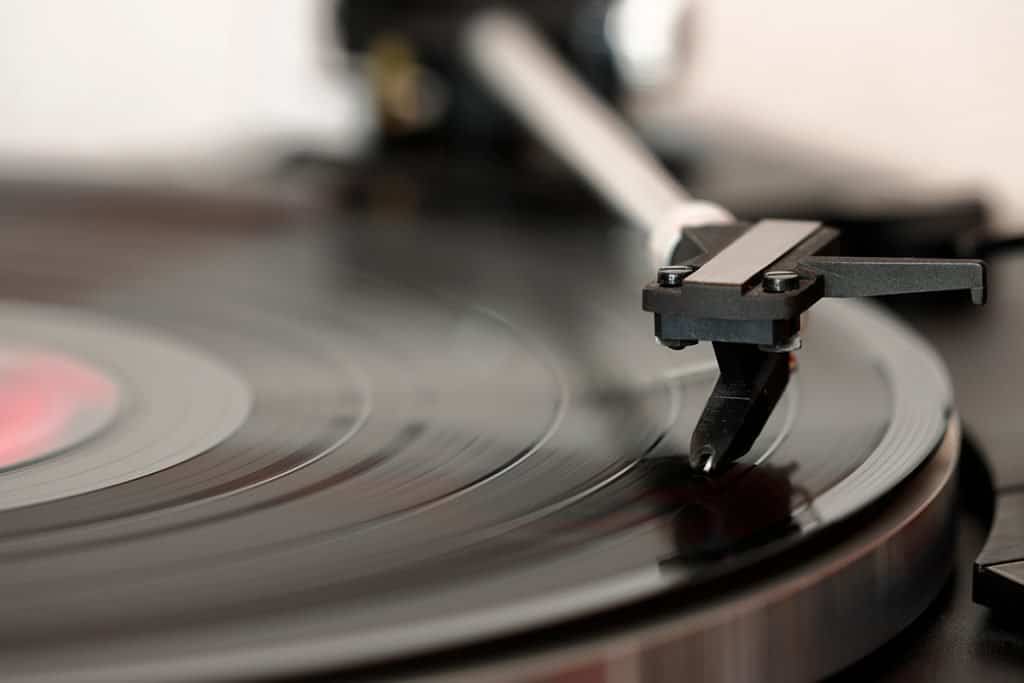
For sharp needles, wear and tear translates to dullness or rounding of the needle tip. Conversely, rounded needles become jagged and sharp. The result of both is poor sound quality, record damage, and a needle in need of replacement.
Elliptical-shaped needles are especially prone to wearing down more quickly than other needlepoint shapes. Since they experience more contact with the grooves in order to access more data from the record, they’re more vulnerable to scraping and wearing.
To examine the needle closely enough to verify its point shape, use a high-powered magnifier to amplify its structure.
The Needle Body Is Out of Shape
It’s not just the point shape of the needle you need to keep an eye on. Indeed, the entire needle should be frequently inspected to ensure it’s intact. If the body of the needle has bent, split open, or in some way become deformed, it’s time to replace the needle.
Black Residue That Originates From the Vinyl
Residue isn’t the end of the world. With time and use, needles inevitably need cleaning from dust and other household debris.
However, the needle can sometimes scrape material off of the vinyl record itself. Scrapings come off as a dark residue or stain at the tip of the needle. If you notice other signs of wear in your needle—or even chips and other damage to your records—it’s time to replace it.
Frolicking Needles: Skipping Over Grooves
Needles ready for replacement sometimes start skipping over entire grooves rather than widening them. Skipping is especially problematic because the needle can scratch up not just an individual groove but also across the whole record’s surface.
Needles can skip because they’re bent or have otherwise worn down. Take a look at the needle tip, body, and at your vinyl records for any signs of chipping. Also, listen for crackling, popping, and other startling audio distortions caused by jumping needles.
How To Replace a Record Player Needle
Typically, replacing the needle itself is easy. Sometimes you’ll need to replace the entire cartridge, but that’s usually a simple task, also. If necessary, obtain the model number to guarantee you order the correct part. Once you’ve got your replacement in hand, follow these steps:
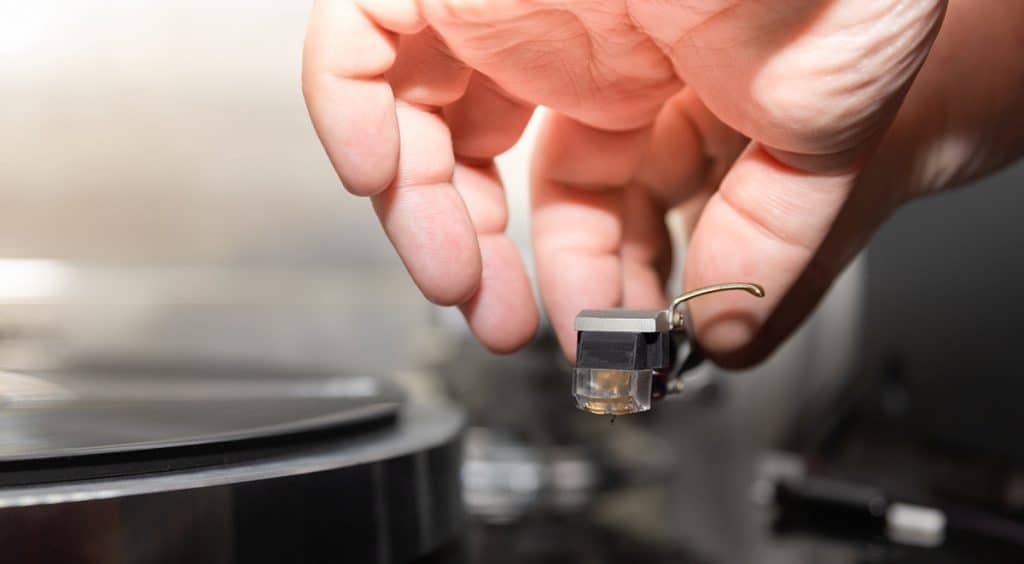
- Remove the former needle or cartridge that you’ve determined needs replacing.
- Place the new needle or cartridge where the old one was before.
- Align said needle or cartridge to manufacturer specifications.
How To Prolong Record Player Needles and Vinyl
Prevention will prove invaluable in protecting the integrity of your record player parts and vinyl records themselves. Consider the following advice as a vinyl record enthusiast:
- Clean the needle every time you use your record player, or at least once per week. You can pull a needle brush toward you to scrub the needle tip–this helps protect the cantilever. You can also place a needle gel on the turntable, lower the needle, and let the tonearm dip the needle into the gel a couple of times.
- Close the turntable cover to protect from ambient debris, even when you’re not playing music. Though this may be inconvenient or alter the aesthetic of your whole vinyl deal, it’s a crucial aspect of preventing debris from gathering where it can experience friction with the vinyl and damage records.
- Store records in their cases. Do everything you can to protect your records from accumulating ambient debris. The most effective way is to cover up your records in the cases they came in.
- Handle the record from the edges. Avoid direct contact with the grooves of the vinyl itself. Use your fingers or palms and gently place records down while holding the outer perimeter.
- Clean your records with a microfiber cloth and cleaning fluid or isopropyl alcohol before you play them. That way, any dirt that manages to get onto the vinyl won’t stay caught in the grooves and scratch up the surface. Dedicate time to cleaning your records at least once annually.
Conclusion
Vinyl records hold a special place in the hearts of many, from those who grew up playing records in their bedrooms to those who have recently discovered older technology and come to adore it. No matter what we use to play and enjoy our art, it’s vital to keep our record player parts and vinyl spiffy. That way, we can enjoy our music and collectibles long after purchase.
VacationVinyl.com is a participant in the Amazon Services LLC Associates Program, an affiliate advertising program designed to provide a means for sites to earn advertising fees by advertising and linking to Amazon.com. We also participate in other affiliate programs which compensate us for referring traffic.

